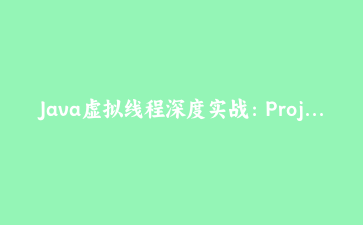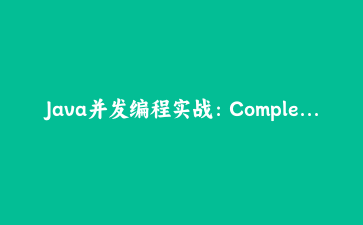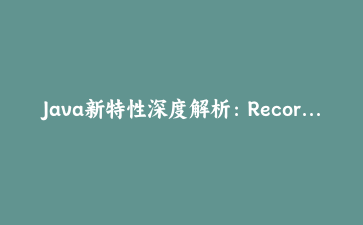发布日期:2024年4月20日
一、平台架构设计
本教程将实现一个企业级微服务治理平台,主要解决以下核心问题:
- 服务拓扑可视化:动态服务依赖关系图谱
- 智能流量管控:自适应熔断与降级策略
- 混沌工程:故障注入与演练系统
- 无损发布:流量镜像与灰度发布
- 服务自愈:异常检测与自动恢复
技术栈:Java17 + SpringBoot3 + SpringCloud + Istio + Kubernetes + Prometheus
二、环境准备与项目初始化
1. 开发环境配置
# 安装JDK17
brew install openjdk@17
# 验证Java版本
java -version
# openjdk 17.0.6 2023-01-17
# 创建Maven项目
mvn archetype:generate
-DgroupId=com.cloudnative
-DartifactId=service-mesh
-DarchetypeArtifactId=maven-archetype-quickstart
-DinteractiveMode=false2. 核心依赖配置
<!-- pom.xml -->
<parent>
<groupId>org.springframework.boot</groupId>
<artifactId>spring-boot-starter-parent</artifactId>
<version>3.1.0</version>
</parent>
<dependencies>
<!-- SpringCloud 2022 -->
<dependency>
<groupId>org.springframework.cloud</groupId>
<artifactId>spring-cloud-starter-kubernetes-fabric8-all</artifactId>
<version>3.0.0</version>
</dependency>
<!-- Istio Java API -->
<dependency>
<groupId>io.istio</groupId>
<artifactId>istio-api</artifactId>
<version>1.17.0</version>
</dependency>
<!-- 指标监控 -->
<dependency>
<groupId>io.micrometer</groupId>
<artifactId>micrometer-registry-prometheus</artifactId>
</dependency>
</dependencies>三、服务网格集成
1. Istio Sidecar自动注入
// src/main/resources/application.yml
spring:
cloud:
kubernetes:
discovery:
all-namespaces: true
reload:
enabled: true
config:
sources:
- name: istio-config
namespace: istio-system
# Kubernetes Deployment配置
apiVersion: apps/v1
kind: Deployment
metadata:
name: inventory-service
labels:
app: inventory
version: v1
annotations:
sidecar.istio.io/inject: "true" # 启用自动注入
spec:
template:
metadata:
labels:
app: inventory
version: v12. 流量管理策略
// 流量路由配置类
@Configuration
public class TrafficRoutingConfig {
@Bean
public VirtualService virtualService() {
return VirtualService.builder()
.metadata(ObjectMeta.builder()
.name("inventory-route")
.build())
.spec(VirtualServiceSpec.builder()
.hosts("inventory-service")
.http(List.of(HTTPRoute.builder()
.route(List.of(HTTPRouteDestination.builder()
.destination(Destination.builder()
.host("inventory-service")
.subset("v1")
.build())
.weight(90)
.build(),
HTTPRouteDestination.builder()
.destination(Destination.builder()
.host("inventory-service")
.subset("v2")
.build())
.weight(10)
.build())
.build()))
.build());
}
}四、混沌工程实现
1. 故障注入控制器
@RestController
@RequestMapping("/chaos")
public class ChaosController {
@PostMapping("/inject")
public String injectFault(@RequestBody FaultConfig config) {
switch (config.getFaultType()) {
case LATENCY:
// 延迟注入
ChaosInterceptor.addLatency(
config.getServiceName(),
config.getDuration(),
config.getRatio());
break;
case ERROR:
// 错误注入
ChaosInterceptor.addError(
config.getServiceName(),
config.getErrorCode(),
config.getRatio());
break;
}
return "Fault injected successfully";
}
@GetMapping("/clear")
public String clearFaults() {
ChaosInterceptor.clearAll();
return "All faults cleared";
}
}
// 故障拦截器实现
public class ChaosInterceptor implements ClientHttpRequestInterceptor {
private static final Map<String, FaultConfig> faults = new ConcurrentHashMap();
public static void addLatency(String service, int duration, float ratio) {
faults.put(service, new FaultConfig(FaultType.LATENCY, duration, ratio));
}
@Override
public ClientHttpResponse intercept(HttpRequest request, byte[] body,
ClientHttpRequestExecution execution) throws IOException {
String serviceName = request.getURI().getHost();
if (faults.containsKey(serviceName)) {
FaultConfig config = faults.get(serviceName);
// 按比例触发故障
if (Math.random() < config.getRatio()) {
if (config.getFaultType() == FaultType.LATENCY) {
try {
Thread.sleep(config.getDuration());
} catch (InterruptedException e) {
Thread.currentThread().interrupt();
}
} else {
throw new HttpClientErrorException(
HttpStatus.valueOf(config.getErrorCode()),
"Chaos Engineering Injection");
}
}
}
return execution.execute(request, body);
}
}2. 自动化演练系统
@Service
public class ChaosExperimentRunner {
@Scheduled(fixedRate = 30 * 60 * 1000) // 每30分钟执行一次
public void runScheduledExperiment() {
List<ExperimentTemplate> templates = loadExperimentTemplates();
templates.forEach(template -> {
if (shouldRun(template)) {
executeExperiment(template);
}
});
}
private void executeExperiment(ExperimentTemplate template) {
template.getStages().forEach(stage -> {
// 执行故障注入
restTemplate.postForEntity(
"http://chaos-service/inject",
stage.getFaultConfig(),
String.class);
// 监控系统指标
monitorSystem(stage.getDuration());
// 恢复系统
restTemplate.getForEntity(
"http://chaos-service/clear",
String.class);
// 生成演练报告
generateReport(stage);
});
}
}五、智能弹性伸缩
1. 自定义指标适配器
@Component
public class CustomMetricsAdapter implements MetricsProvider {
private final MeterRegistry meterRegistry;
private final KubernetesClient kubernetesClient;
public CustomMetricsAdapter(MeterRegistry meterRegistry,
KubernetesClient kubernetesClient) {
this.meterRegistry = meterRegistry;
this.kubernetesClient = kubernetesClient;
}
@Scheduled(fixedDelay = 5000)
public void scrapeMetrics() {
// 获取业务指标
double bizPressure = calculateBusinessPressure();
// 注册自定义指标
Gauge.builder("business.pressure", () -> bizPressure)
.tag("service", "order-service")
.register(meterRegistry);
// 上报到K8s Metrics API
kubernetesClient.top()
.pods()
.withName("order-service")
.metrics()
.addCustomMetric("business_pressure", bizPressure);
}
private double calculateBusinessPressure() {
// 复合指标计算逻辑
return (requestCount * avgLatency) / (successRate * podCount);
}
}2. HPA策略配置
apiVersion: autoscaling/v2
kind: HorizontalPodAutoscaler
metadata:
name: order-service-hpa
spec:
scaleTargetRef:
apiVersion: apps/v1
kind: Deployment
name: order-service
minReplicas: 2
maxReplicas: 10
metrics:
- type: Pods
pods:
metric:
name: business_pressure
target:
type: AverageValue
averageValue: 100六、无损发布系统
1. 流量镜像配置
@Configuration
public class MirroringConfig {
@Bean
public VirtualService mirroringService() {
return VirtualService.builder()
.metadata(ObjectMeta.builder().name("order-mirror").build())
.spec(VirtualServiceSpec.builder()
.hosts("order-service")
.http(List.of(HTTPRoute.builder()
.mirror(Destination.builder()
.host("order-service-canary")
.build())
.mirrorPercentage(10.0) // 10%流量镜像
.route(List.of(HTTPRouteDestination.builder()
.destination(Destination.builder()
.host("order-service")
.subset("current")
.build())
.build()))
.build()))
.build());
}
}2. 金丝雀发布控制器
@RestController
@RequestMapping("/deploy")
public class CanaryDeployController {
@Autowired
private KubernetesClient kubernetesClient;
@PostMapping("/canary")
public String startCanary(@RequestBody CanaryConfig config) {
// 创建Canary Deployment
kubernetesClient.apps().deployments()
.inNamespace(config.getNamespace())
.create(createCanaryDeployment(config));
// 配置流量比例
updateTrafficSplit(config.getInitialWeight());
return "Canary deployment started with " +
config.getInitialWeight() + "% traffic";
}
@PostMapping("/promote")
public String promoteCanary() {
// 逐步增加流量比例
for (int weight = 10; weight <= 100; weight += 10) {
updateTrafficSplit(weight);
waitForStabilization();
}
// 清理旧版本
kubernetesClient.apps().deployments()
.withName("order-service-v1")
.delete();
return "Canary promoted to production";
}
}七、服务自愈机制
1. 健康检查增强
@Component
public class EnhancedHealthIndicator
implements HealthIndicator, ApplicationListener<HealthCheckEvent> {
private final Map<String, ServiceHealth> serviceHealth = new ConcurrentHashMap();
@Override
public Health health() {
Health.Builder builder = Health.up();
serviceHealth.forEach((service, health) -> {
if (health.getStatus() != Status.UP) {
builder.down()
.withDetail(service, health.getMessage());
}
});
return builder.build();
}
@Override
public void onApplicationEvent(HealthCheckEvent event) {
serviceHealth.put(
event.getSource().toString(),
new ServiceHealth(event.getStatus(), event.getMessage()));
if (event.getStatus() == Status.DOWN) {
triggerSelfHealing(event.getSource());
}
}
private void triggerSelfHealing(Object source) {
// 自愈逻辑实现
}
}2. 自动修复策略
@Service
public class SelfHealingService {
@Retryable(maxAttempts = 3, backoff = @Backoff(delay = 1000))
public void performHealing(ServiceInstance instance) {
switch (instance.getIssueType()) {
case MEMORY_LEAK:
restartPod(instance);
break;
case DEADLOCK:
threadDumpAndRestart(instance);
break;
case NETWORK_ISSUE:
reschedulePod(instance);
break;
}
}
@Scheduled(fixedRate = 60000)
public void checkAndHeal() {
healthIndicators.forEach(indicator -> {
if (indicator.isDown()) {
performHealing(indicator.getInstance());
}
});
}
}八、总结与扩展
通过本教程,您已经掌握了:
- 云原生微服务治理的核心架构
- 服务网格与混沌工程的实践
- 智能弹性伸缩的实现
- 无损发布与自愈机制
扩展学习方向:
- 服务网格数据平面扩展
- 基于AI的异常检测
- 多集群服务治理
- Serverless集成方案















